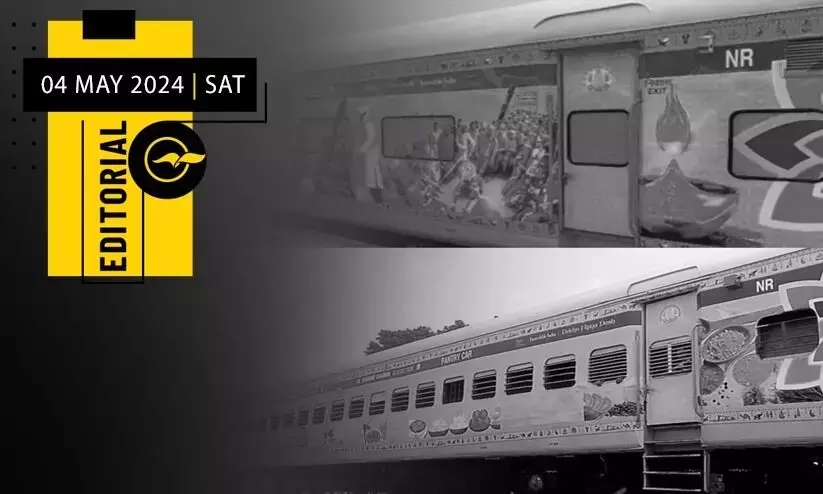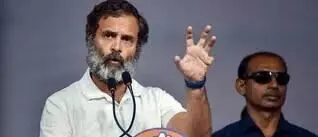
The railway tracks that are becoming alien to ordinary people
text_fieldsAs the preliminary results of the Lok Sabha elections start trickling in on June 4th, a train will depart from the capital city of Thiruvananthapuram to Madgaon in Goa. Although unrelated to the elections, this train has been widely discussed without much action from the previous government. The introduction of private trains marks another step in the privatization of the railways, the lifeline of India and the hope of the common man. The Modi government has devised a special scheme to allow private trains to operate on railway tracks using existing infrastructure. The Madgaon trip is part of this initiative. Officials state that the package, named 'Bharat Gaurav Yatra', will facilitate travel to Goa, Mumbai, and Ayodhya. The Goa and Mumbai packages are four days each, while the Ayodhya package spans eight days. The project is being supported by the Chennai-based SRMP Group, who are utilizing private trains with 600 seats purchased from Indian Railways. This VIP train, equipped with extensive facilities, provides some insight into the future of Indian Railways.
Since 2019, private trains have begun to operate on our tracks. The trial run, which began with the 'Tejas Express' on the Lucknow-Delhi route, has now expanded to various parts of the country. The country's first fully private train service was launched in June 2022. The inaugural journey was from Coimbatore in Tamil Nadu to Shirdi in Maharashtra. The flag-off of this train, as part of the 'Bharat Gaurav Yatra', took place amidst strong protests. M.N.C. Property Developers, a Coimbatore-based company, is behind this service. The company will manage ticket sales and inspections for the service, which will utilize the railway tracks, signalling systems, and platforms, as well as the services of railway loco pilots and guards. Additionally, the company has the authority to set its own fares. In the initial days, they charged more than double the normal fare. Naturally, railway workers, under the leadership of various unions in Madurai and Coimbatore, organized strong protests against this unethical practice. Unfortunately, mainstream media did not report it as news. Instead, most media outlets focused on describing the private train and its amenities. Even now, as another company in Kerala enters the field with a similar service, the media stance remains unchanged. Mainstream media are busy highlighting the features of the train, which will run to Ayodhya and Mumbai, with accompanying pictures. Despite the clear harm caused by the encroachment of such private services on ordinary passengers, neither the government nor the media is willing to address the issue.
Also Read:First Ayodhya special train to flag off from Thiruvananthapuram
There's no need to elaborate on the discrimination shown by the Central Government towards Kerala, an opposition state, in rail development. There's a long list of negligence and neglect, including apathy and delays in doubling and electrification of railway lines, inadequacy of trains, shortage of coaches in available trains, and extensive cancellation of passenger trains after the Covid period. Two days ago, Congress leader Rahul Gandhi shared a picture on the social media platform 'X' that highlighted how train travel has become miserable for ordinary people. The picture of a passenger sleeping in the toilet due to lack of seats in a crowded train accurately depicts the Indian Railways disaster. Under the guise of COVID-19, existing general compartments were converted into reserved coaches and AC coaches were increased by cutting sleeper classes, making train travel inaccessible to ordinary people. In Kerala, one could even argue that punitive measures were taken as a political vendetta. Despite protests against this, there were no results. There's doubt as to how much alternative projects like K-Rail, which the state government has considered, will benefit ordinary people even if they become a reality. These projects are impractical and expensive. The new trains introduced by the central government during this period were also aimed at middle-class and wealthy passengers. It's in this context that the government is introducing new private trains on the tracks as the next thunderbolt. In this 'reform' using existing systems, the victims will be ordinary passengers. It's certain that the journey of these private luxury trains will further marginalize the existing passenger trains, even if to a limited extent. This privatization of the railways must be stopped.

























